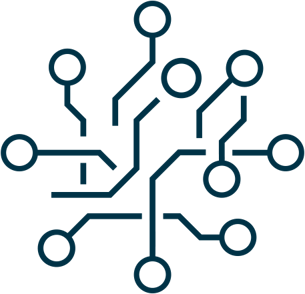The cloud revolutionized how businesses operate, offering on-demand scalability and seamless access to IT infrastructure. However, this agility comes with unique security challenges. To thrive in this digital landscape, businesses need cutting-edge cloud security concepts to safeguard their valuable digital assets.
This article dives into the essential components of robust cloud security and explores best practices for fortifying your systems:
1. Cloud IAM: The Gatekeeper of Your Business Data
Cloud IAM acts as the gatekeeper of your cloud environment, governing user identities and access permissions. Essentially, Cloud IAM controls who can do what in the cloud. This critical data protection service restricts access to sensitive data and critical systems, ensuring only authorized users have the necessary permissions.
Effective IAM implementation incorporates these advanced practices:
- Multi-factor Authentication (MFA): Adds an extra layer of security by requiring two or more verification factors (e.g., password and fingerprint) for user access.
- Role-based Access Control (RBAC): Minimizes access abuse by assigning system access based on a user's role within the organization. For example, a marketing team member wouldn't have access to financial data.
- Privileged Access Management (PAM): Secures, controls, and monitors access to critical resources, particularly those considered high-risk.
2. Proactive Defense: Threat Modeling for Cloud Security
The cloud environment harbors unique threats that require proactive security measures. Threat modeling helps identify potential vulnerabilities and anticipate attack vectors specific to your cloud infrastructure. By combining it with thorough cybersecurity assessments and mitigation strategies, you can proactively safeguard your cloud assets against evolving threats.
Effective threat modeling involves several steps:
- Systematic Identification: Enumerating resources, data flows and potential entry points within the cloud infrastructure.
- Threat Brainstorming: Identifying plausible threat agents and their possible methods of attack.
- Vulnerability Analysis: Pinpointing specific weaknesses that could be exploited by identified threats.
- Mitigation Strategy Development: Designing and implementing controls to address the risks posed by identified threats and vulnerabilities.
3. Empower Your Workforce: Building a Culture of Cloud Security
Even with the strongest cloud security technologies, human error can still lead to breaches. Educating your employees about secure cloud usage, data handling, and threat recognition is crucial. Conduct regular training sessions and awareness programs to empower your team to become active participants in maintaining a secure cloud environment.
Here are some approaches to maximize the effectiveness of your cloud security culture:
- Simulation-based Training: Engage employees with simulated phishing attacks and other realistic scenarios to teach them how to react properly.
- Regular Updates: Keep training content updated with the latest threats and best practices to ensure relevancy.
- Engagement Techniques: Use gamification and rewards to increase employee engagement and retention of critical security concepts.
4. Vigilant Security Monitoring: Constant Watch
Monitoring your cloud environment helps with the prompt detection of threats. Stay ahead of cloud security challenges by leveraging advanced cybersecurity assessment tools and techniques. Analyze logs, scrutinize network traffic, and monitor system behavior to ensure data integrity and privacy in the cloud.
Effective monitoring strategies include:
- Intrusion Detection Systems (IDS): Deploy systems that monitor network traffic for suspicious activity and known threats.
- Log Management: Implement robust log management solutions to collect, analyze and store logs for future reference and real-time analysis.
- Security Information and Event Management (SIEM): Utilize SIEM technology to provide a more comprehensive overview of security-related data, aiding in quicker detection of potential threats.
Learn More: Proactive Data Privacy: Achieve IT Compliance & Minimize Breaches
5. Incident Response Plan: Prepared for the Unexpected
Despite robust preventive measures, security incidents may still occur. Having a well-defined incident response plan outlines clear procedures for detection, containment, investigation, and recovery. This minimizes the impact of breaches and expedites the restoration of normal operations.
Key elements of an effective incident response plan include:
- Preparation: Training and equipping response teams with the necessary tools and information.
- Identification: Quickly detecting and identifying the nature of the security incident.
- Containment: Isolating affected systems to prevent further damage.
- Eradication: Removing the root cause of the incident and all associated threats.
- Recovery: Restoring and validating system functionality for business continuity.
- Lessons Learned: Analyzing the incident to improve future response efforts and security postures.
6. The Ultimate Safeguard: Data Encryption
Data encryption is a crucial feature for any cloud data security solution. It serves as a layer of defense, rendering sensitive information unintelligible to unauthorized parties. With data encryption implemented in transit and at rest, you can prevent data from being deciphered even if intercepted.
Advanced encryption practices include:
- End-to-end Encryption: Ensuring data is encrypted from the point of origin to the point of destination, leaving no points unsecured.
- Strong Encryption Algorithms: Utilizing robust algorithms and key management practices to enhance security.
- Zero Trust Architecture: Implementing strict access controls and continuously validating security, even within the network, to minimize trust assumptions.
7. Compliance and Governance Management: Stay Ahead of Regulations
Compliance with industry standards and regulations is crucial for businesses operating in today’s world. Investing in compliance management software streamlines your compliance efforts, tracks regulatory changes, and ensures adherence to applicable standards. By regularly auditing cloud configurations and enforcing governance policies, you can uphold regulatory compliance while fortifying your cloud security posture.
Effective compliance and governance strategies include:
- Compliance Management Software: Automating compliance tracking and management to ensure continuous adherence to regulatory changes.
- Regular Audits: Conducting frequent audits of cloud configurations to ensure compliance with governance policies.
- Employee Training: Educating employees on compliance requirements to prevent inadvertent violations.
8. Patch Management: Keeping Your Systems Up-to-Date
Patch management is the process of updating or repairing your IT infrastructure to remove security vulnerabilities and improve performance. It is crucial for reducing the attack surface and mitigating risks. Thwart potential exploits and safeguard against emerging threats by promptly applying security patches to your cloud infrastructure and applications. This ensures that your business stays resilient even in the face of evolving cyber threats.
Best practices for patch management include:
- Automated Patch Management Systems: Utilizing tools that automatically update systems to close vulnerabilities quickly.
- Vulnerability Assessments: Regularly scanning for vulnerabilities to prioritize patching based on risk.
- Comprehensive Testing: Testing patches in a controlled environment before full deployment to avoid disruptions.
Building a Secure Cloud Future with Adnovum
Developing a comprehensive cloud security strategy is essential for businesses seeking to harness the full potential of cloud computing while safeguarding their digital assets. By implementing the cutting-edge cloud security concepts and best practices outlined above, you can significantly enhance your cloud security posture and empower your business to thrive in the digital age.
Adnovum, a Swiss IT security company, is your trusted partner in navigating the ever-evolving cloud security landscape. Our team of experts possesses in-depth knowledge of cloud IAM, threat modeling, data encryption, and all aspects of robust cloud security. We offer a comprehensive suite of services designed to protect your valuable data and ensure business continuity:
- Cloud Security Assessments: Identify vulnerabilities and develop a roadmap for strengthening your cloud security posture.
- Cloud IAM Consulting: Design and implement secure access controls tailored to your specific business needs.
- Data Encryption Solutions: Safeguard your sensitive data both in transit and at rest.
- Compliance Management Services: Ensure adherence to industry regulations and data privacy laws.
- Incident Response Planning: Develop a comprehensive plan to effectively respond to security breaches.
Contact Adnovum today to schedule a consultation and discuss how our cloud security solutions can help your business achieve its goals. Let us help you secure your cloud and unlock the full potential of digital transformation.





